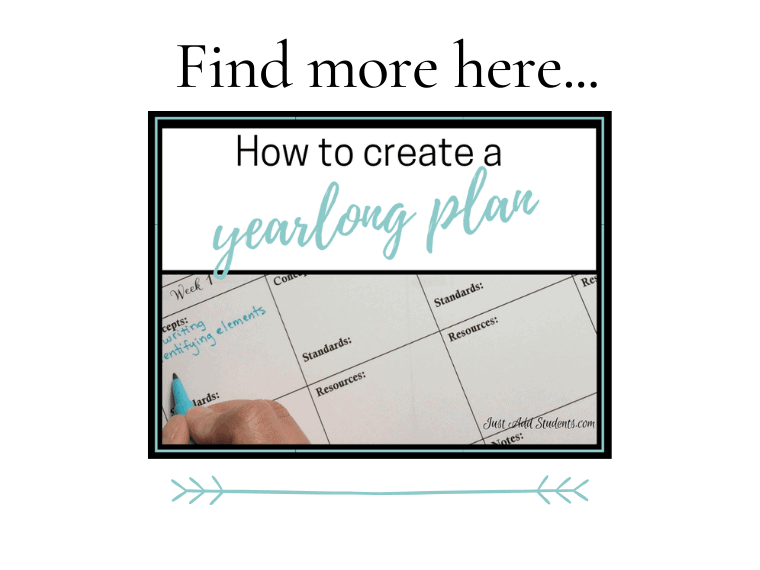Propaganda for Education Funny Education Propaganda
Propaganda surrounds us. And teaching our students to be critical thinkers is more important than ever.
One (fun!) way to do this is to teach about how propaganda is used in popular culture.
Examples are everywhere!
Let's get started:

Start with propaganda they know
Just by asking students to match the company and jingle or slogan will help them start noticing language and influences around them.
Here are some you might want to use:
- "I'm lovin' it" (McDonalds)
- "Is it in you?" (Gatorade)
- "Expect more, pay less" (Target)
- "It's waaay better than fast food." (Wendy's)
- "Snap, crackle, pop!" (Rice Crispies)
- "Just do it" (Nike)
- "Eat fresh" (Subway)
Or, you can play them this YouTube video to get started:
What does it mean?
If your students can match companies and slogans easily and perfectly, what does that mean?
Put this question to your students.
But not only just, what does it mean? but how do you feel about it? How does this influence you (often without even knowing you're influenced), and what do you want to do in response?
We are ALL bombarded with advertisements.
The goal of studying propaganda is to help studentssee through propaganda and develop critical thinking skills in response to it.
Defining terms
There are tons of categories of propaganda. Choose 6-10 that you want your students learn. Some of the most common include:
- bandwagon
- card stacking
- glittering generalities
- loaded terms
- name calling & ad hominem
- plain folks
- testimonial
- transfer
Provide students with a short definition for each, and encourage them to be on the lookout for examples of these that they'll see every day!
Include opportunities for students to add examples to the definitions — you can have them write one word per page in their resource notebook. That way they'll have room to add examples.
Gather your own examples of propaganda
It isn't hard to discover a wide range of propaganda techniques when you start looking for them!
Commercials and political ads will provide a great range of possibilities. Ask your students to help you gather examples as well. You can build a library of great examples this way!

Often, you'll find more than one technique used — and that's to be expected! Marketers and speech writers aren't following a set of rules beyond trying to persuade the audience.
Once you begin sharing examples, ask your students toanalyze by rating how effective the commercial are andwhy. This helps build their critical thinking skills and provides an avenue for discussion.
Not all of your students will agree on what is and isn't persuasive.
This is a great opportunity for your students to practice clarifying what they think, why, and how to verbalize their thoughts.

Or use my slideshow-
You can use this Prezi to provide your students with 8 techniques, definitions and examples:
8 Propaganda Techniques
Using commercials to teach propaganda
Alright, alright, alright! We all love Matthew McConaughey, but his Lincoln commercials border on the surreal! Middle school students especially love analyzing commercials like this. What does this ad really have to do with a car? Students love discussing that question!
Classic commercials also provide wonderful opportunities to examine persuasive techniques — and YouTube has them aplenty!
Practicing analysis & critical thinking
Once students are familiar with different propaganda techniques, extend the learning by asking them to do at least three things:
- Dig in with analysis questions:
- what do they notice about the language used?
- the images?
- what is their eye drawn to?
- how would they describe the music used?
- what are the primary colors?
- where is the placement of the logo or the slogan?
- how does the ad try to assure that you'll remember it?
2. Use evidenceto support their responses.
3. Defend whether or not they believe the propaganda is effective.
You can do this with a classroom or small group discussion, journal response, exit cards, or quick write activity. These quick activities can be used as an assessment of learning as well.
Continue to encourage your students to find examples in speeches, billboards, TV shows…even the news. Opportunities to practice critical thinking are all around us!
A fun way for students to work together on this is to make propaganda a text they examine in their book clubs or literature circles. Once students understand techniques, this allows them to practice applying their skills.
Need more help?

You can use the link below to find a student workbook on propaganda at my Teachers Pay Teachers Store.
Workbook: A Look at Propaganda
Let me know what you think? How do you teach critical thinking and propaganda to your students?
With gratitude,

desrosiersgristordenty.blogspot.com
Source: https://justaddstudents.com/propaganda/
0 Response to "Propaganda for Education Funny Education Propaganda"
Post a Comment